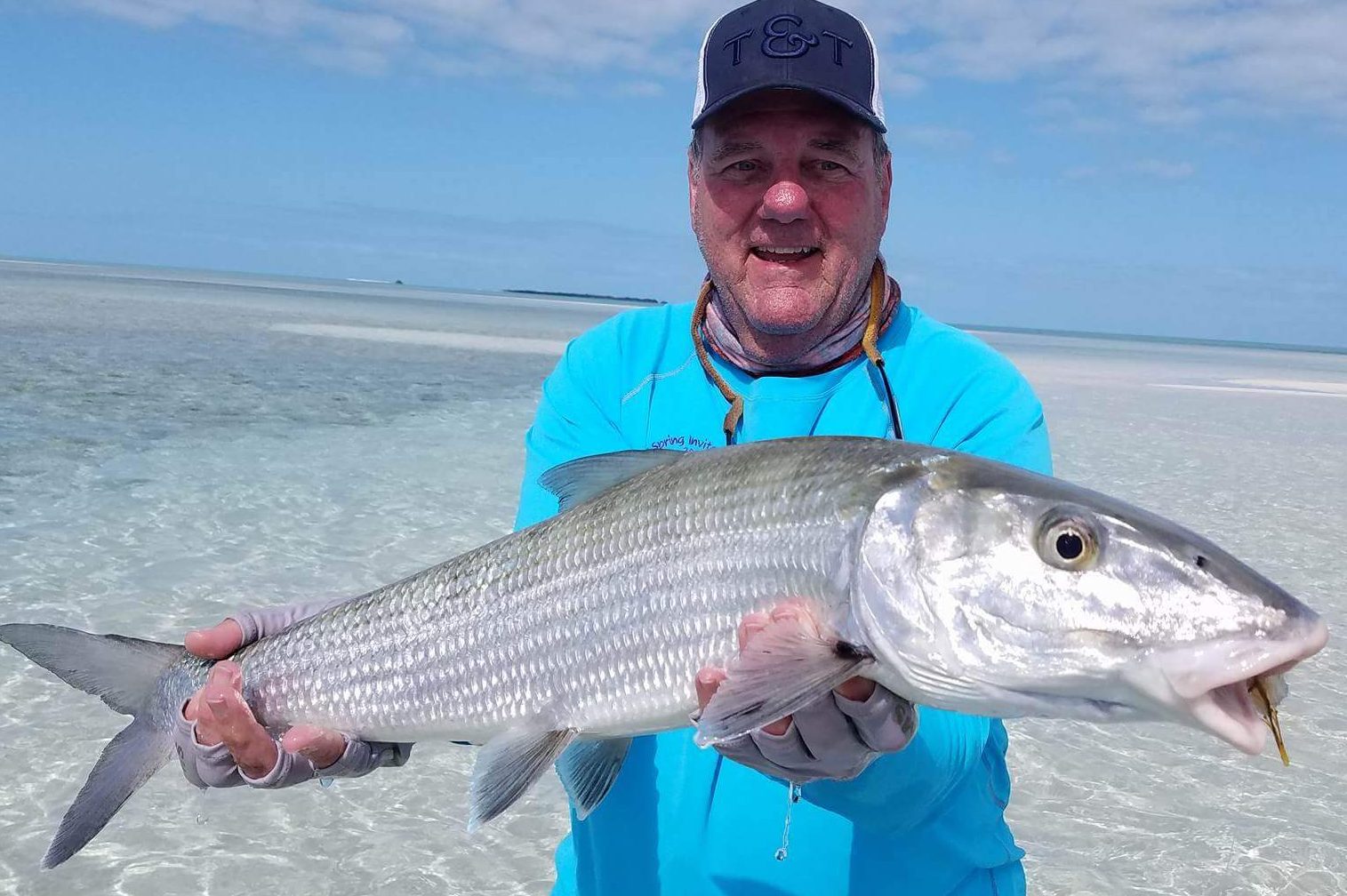Blog Post:
Catching tarpon on the fly is an extraordinary experience. Crazy things can happen when a tarpon eats. Sometimes they eat the fly and keep swimming at the boat, or eat and turn bolting for another continent. They may gobble a fly and jump feet away leaving a hole in the ocean and the angler wet. Line peels off the deck, errant loops wrap parting the angler from the fish, captains shout unintelligible orders, knees go weak, hands get cut and burned.
There’s really nothing like it in the world of saltwater fishing.

To get geared-up for tarpon fishing is not a casual endeavor. Twelve weight rods are almost essential, it needs to be quick and powerful enough to cut headwinds. A tarpon fly rod also needs to put steady and predictable pressure on a running fish. The reel does much more than hold the line it needs to slow down 150 lb fish heading for the deeps, a sticky drag will leave the angler with suddenly limp line. Also when a fish runs at the boat the reel needs to pick up line quickly. The backing knot has to be smooth and strong, the leader-line connection needs to be clean, perfect. The smallest flaw in the tarpon rig can leave the angler with stories only about the fish that got away.

Choosing the right tarpon flies is important too. This may seem counter intuitive but the best tarpon flies are not the same as the best tarpon patterns. Great patterns tied improperly won’t work well, an ugly captain’s fly tied well will work all day. The most important thing about a tarpon fly is how the individual fly behaves in the water. Tarpon don’t bother with a fly that sinks to the bottom, they might not eat a fly that sits on top. They might look at a fly that’s floating just right in the water column but decide it isn’t food for NO reason. To get everything just right tarpon guides often tie their own flies. Fly tyers gearing up for a tarpon trip need to understand what a specific tarpon pattern is intended to do being attentive to techniques to make the fly fish right. Try to copy the bulk and profile of a pattern with as little material as possible. Rabbit tails need to be controlled to ensure they don’t foul, feather tails also need to be corralled too. S.S. Flies uses an in-line foul guard on all our rabbit tails and a loop guard on feather tails. It’s also possible to employ stiff materials to keep tails in place. The stiff bucktail collar on Cockroaches can keep the feathers in place, we often veil flowing material like Cashmere goat with a stiff synthetic.
All of the captain’s favorites listed below require great attention to detail when tying them. They all look pretty simple but if we get a batch a little off we hear back from the captains; they keep us on our game!
Keys Captain’s favorite tarpon flies:
#1 Fox Fur Tarpon Fly – For many captains this is the fly they always reach for. It works no matter the time of year or location. This is a simple looking fly that actually is hard to reproduce. S.S. Flies tracks down an uncommon variety of fox tails and dye them for this fly. It is easy to use too much material making it float but too little make it look like a drowned small rodent.
#2 SS T-Poon – Another tarpon fly that works from Tampa to Cuba and throughout Mexico, Belize and Hondorus. The biggest secret to this fly is the ostrich herl tail. It’s hard to find it long enough especially for the 4/0 version and it needs a lot of it to get a full flowing seductive fly.
#3 Cult Classics – With roots starting with Fritz Coker and Capt. Tom Roland these original Key West patterns have been catching tarpon for a lot of years. Later in the season many Keys tarpon guides turn to this old style feather flies.
#4 Duke of Poons – The worm colored version of this fly as become the only fly a number of S.S. Flies captains use through May and June when tarpon are focused on palolo worms. The other colors are great on both cruising fish and laid up tarpon in the backcountry.















